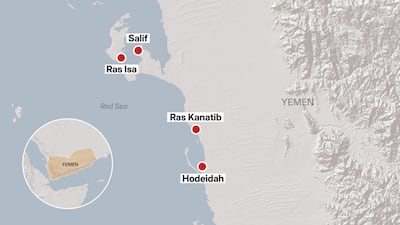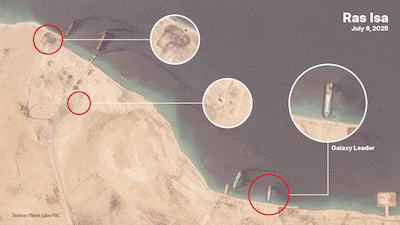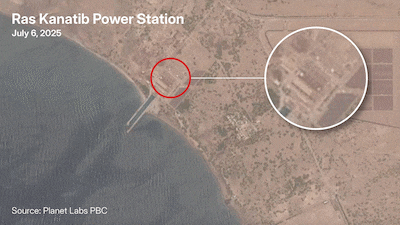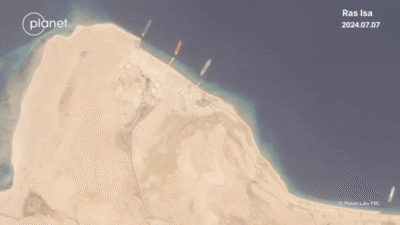Repeated Israeli strikes on Yemeni ports held by Houthi rebels have had little effect on the operations there, satellite images indicate.
Fuel shipments at ports controlled by the Iran-backed group have continued despite disruption to pipelines, with the Houthis finding alternative means of getting supplies ashore, analysis shows.
Israel launched its most recent attacks overnight on July 6. Air strikes targeted the Red Sea ports of Hodeidah, Ras Isa and Al Salif, the Ras Kanatib power station and the cargo ship Galaxy Leader − which was hijacked by the Houthis in 2023 and Israel claims was being used to monitor international shipping.
Israel has hit key Houthi-controlled ports numerous times

Since the start of the Israel-Gaza war, the Houthis have regularly attacked shipping in the Red Sea and fired missiles and drones at Israel. The rebels say they are acting in solidarity with Palestinians.
Here, The National looks at what Israel has targeted and the impact − or lack of impact − of strikes on Houthi infrastructure.
Hodeidah – the Houthis' largest port
Hodeidah, the Houthis’ main gateway to the Red Sea, has been struck multiple times since July 2024. Imagery from July 4, 2025, reveals heavy crater damage, undoubtedly affecting and limiting fuel operations.
Impact on As Salif, Ras Isa and Ras Kanatib after Israeli strikes on July 7, 2025
Below is a series of satellite images showing before and after damage to two ports and a power station along the coast of Houthi-controlled Hodeidah on the Red Sea. All three locations have been key to Houthi refuelling and stockpiles.
As Salif port: Strikes along the full length of the pier. Despite damage, cargo vessels remain docked.

Ras Isa terminal: Strikes targeted fuel terminals and the hijacked Galaxy Leader, which is docked at the port.

Ras Kanatib power station: New damage is visible on what appear to be the main generator units.

Ships keep docking and fuel keeps flowing
Visual time-lapse satellite data from July 2024 to July 2025 shows fuel shipments to Houthi-held ports have not stopped. Ships continue to dock, and alternative offloading methods are being used to bypass damaged infrastructure.

“Big shipments have been affected significantly. But the Houthis adapt − they use alternate docks or just a simple pipe and a tanker to move oil,” said Baraa Shabani, a senior fellow with the London-based Royal United Services Institute think tank.
Offshore fuel transfers
Some Houthi-affiliated tankers, such as Valente and VLCC Yemen, are seen transferring fuel offshore, a strategy that allows them to bypass ports altogether. Satellite images show ships anchored in the sea, side-by-side near Hodeidah.
Rusi
While the strikes have targeted port infrastructure, most of the Houthis’ weaponry and power bases remain inland, untouched. Analysts have questioned the long-term strategic value of Israel's approach.
“Israel's military goals look very ambiguous, It's not clear what they are trying to achieve through these strikes,” said Mr Shabani.
“If the aim is to eliminate the Houthis threat now, of course,Houthis' they haven't been successful. The Houthis will continue attacking, attacking Israel.
“But if the aim is just to send a message that they can, hit them. As a form of deterrence, then you can say yes, they've, signalled that multiple times. For the Houthis, the main fear is if they lose terrain, if they lose land, and that's not happening at the moment.
Symbolic and disruptive
Despite sustained bombing campaigns, the Houthis continue to launch missiles and attack vessels in the Red Sea.
Two ships have been sunk in Houthi attacks in the past week or so – the Magic Seas on July 6 and the Eternity C on July 9. While all 22 people on the Magic Seas were rescued, four of the 25 crew on the Eternity C are presumed dead, with another 11 unaccounted for.
As images show continued fuel movement and maritime adaptability, the Houthis’ resilience raises questions about the effectiveness of Israel’s air campaign. While symbolic and disruptive, the strikes have not yet significantly altered the rebel group's operational capabilities.

